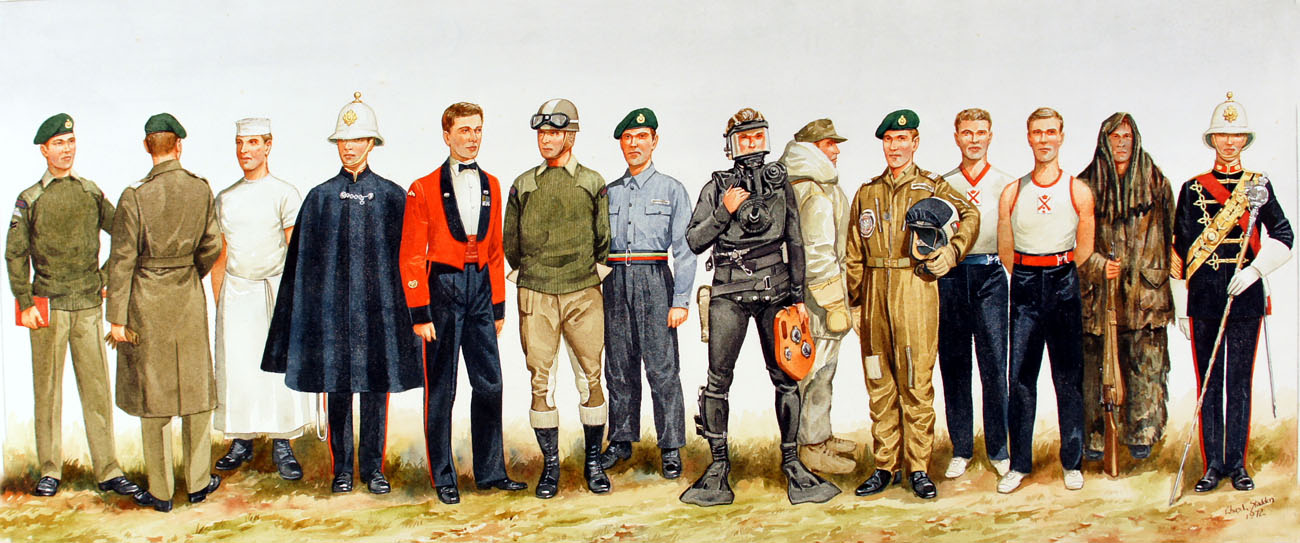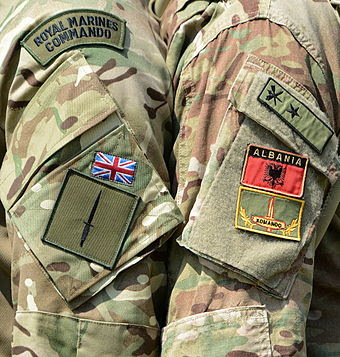
Category: Related Topics
5 Rifle-Cleaning Rules For Dummies
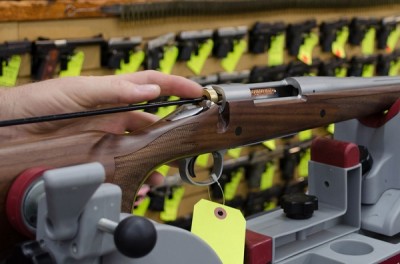
Image source: smithandedwards.com
When it comes to rifles, whether we use them for hunting, taking care of predators, target shooting, or home defense, we want to keep them in top-working condition.
While most hunting style rifles don’t require a significant amount of cleaning, they do get dirty and need an occasional cleaning from time to time. Taking a few moments with the proper cleaning agents and tools can get your rifle ready for storage or for the next time you need to chamber a round.
When you first get your rifle out to clean it, check and recheck that it is unloaded. Work in a safe place and keep the muzzle pointed in a safe direction at all times. Too many supposed “unloaded” guns have killed people.
Lay your rifle down on a bench or table and open the action. Remove the bolt if your rifle is a bolt action and set it aside. Disassemble your rifle as much as you feel comfortable with. Most hunting-style rifles perform admirably with minimal cleaning and do not need to be completely dissembled. Semi-automatic rifles (except for the AR15) can be complicated to disassemble and should be left together unless they are failing to perform or you are advanced enough in your gunsmithing skills to attempt some fine-tuning (beyond the scope of this article).
1. Assemble Cleaning Supplies
Cleaning Rod or Snake
To clean the barrel you’ll want to use a single piece cleaning rod. The screw-together sectional cleaning rods are generally cheaper, but they can damage your bore and should be avoided. Usually the single piece rods are polymer coated, which is softer than the steel of your rifle bore, and won’t scratch it. I recommend purchasing a cleaning rod guide also to ensure you enter your gun’s chamber straight on. If your rod didn’t come with a bore brush, purchase one for your rifle’s caliber out of bronze or nylon.
Keep Your Handgun Locked and Loaded, Ready For Instant Use – Without Fear Of An Accident!
Bore snakes are an excellent option, as well. These soft cords are usually made from washable materials. They can’t damage your bore and for general, quick cleaning, they’re priceless! They also come with a built-in brush, or an additional pull-through brush.
Cleaning Patches
If you’re using a cleaning rod, you’ll also need cleaning patches. These can be made out of any absorbent cloth material (i.e. not paper towels). A cheap option is to cut patches from old T-shirts, but any number of different fabrics will work nicely. You can also purchase patches from sporting goods stores or from online retailers. They may come in larger sizes and need to be trimmed to fit smoothly down the barrel. You also want to grab a clean rag and a few cotton swabs for wiping grime and dust from your rifle’s chamber and action.
Solvent
Lastly you’ll need a solvent, something to cut away at the fouling inside your bore. A favorite solvent is Hoppe’s #9. Another excellent option is Sweet’s 7.62 Bore Cleaning Solvent. Both of these are available at sporting goods stores or online from numerous retailers.
2. Clean the Rifle Bore
First, you’ll clean the barrel. Colin Cash (marksman, military surplus rifle collector, and gun aficionado) shares, “The first and last inch of the barrel are the most important to avoid damaging. If damaged at all, accuracy will suffer.” Keep that in mind as you approach your rifle. While there’s nothing tricky about cleaning a rifle, they do need to be handled with some care.
If at all possible, you want to clean your rifle’s bore in the direction that the bullet travels. Some rifles don’t allow for straight access, but for those that do, this is the best option. If you have a lever action, a pump action or some semi-automatic rifles that don’t allow for straight rear entry, you’ll clean from the direction of the muzzle to the chamber. Or you can choose to use a bore snake. Whichever option you choose, soak a patch or a portion of your bore snake with cleaning solvent and run it down through the bore. If you encounter substantial resistance with your rod and patch, remove the rod and trim the patch before running it again. Allow the rifle to rest for five to 10 minutes to give the solvent time to dissolve the fouling.
Next run a bore brush through the bore to loosen any grime. If you can, once the brush pops out the other end, unscrew it and pull the cleaning rod back out. Be gentle during this step. The solvent should have done most of the work for you. Don’t “scrub” away at the bore as this can damage the lands and grooves of the bore. Run the brush through and then move onto the next step.
Push another patch wet with solvent through the bore and let your rifle rest for a few more minutes. One to three minutes is plenty. Next grab a dry patch and run it through the barrel. This one should pick up plenty of carbon residue (depending on how dirty the rifle is and how long it’s been since it was last cleaned). Continue to run dry patches through until they come out completely clean and dry. If you continue to see dirty patches, you can repeat the above process again with more solvent.
3. Clean the Chamber and Action
While there is not much work to be done on the chamber and action, wiping these areas down with a clean rag is a good idea. You can also use a cotton swab to gently pick up any dust and grime in difficult-to-reach places. Be careful that the cotton swab doesn’t leave any cotton wisps behind though as this can cause malfunctions and attract dirt. There are chamber brushes and mops that you can purchase to clean out your chamber, as well. While not absolutely necessary, they do come in handy. Dental picks can be especially useful as well for more fine-tuned cleaning. Add these to your gun-cleaning kit as you’re able.
4. Clean the Stock and Barrel
When you are finished cleaning your rifle and readying it for storage, take a clean rag and wipe down the rifle barrel with a very light coat of gun oil. This helps remove any water or fingerprint residue that may have gotten on your rifle during the cleaning process. Remington Gun Oil works well, but any kind of gun oil should do the trick. Stocks don’t generally need cleaning if they have a waterproof finish (all synthetics, and sealed wooden stocks). You can wipe them down with a clean rag and brush off any dirt that may have accumulated. Before you store your rifle, wipe off any excess gun oil from the barrel. Close the action and safely drop the firing pin to release any tension in the rifle before storage.
5. Store in a Dry and Safe Place
Perhaps even more important than proper gun gleaning is the safe and dry storage of your rifle. Rust can be an ever-present enemy to rifles, and proper storage is essential to keeping it at bay. Choose a gun safe that fits your rifle collection. It is also a good idea to place some sort of dehydrator within your safe and check it periodically.
You can make your own dehydrator by collecting silica gel packets (like the ones you find in shoes). Cut them open and dump the beads into a tin or aluminum can. To reactivate the beads, simply put them in a 250 degree Fahrenheit oven for three hours. After that, place the open can in your gun safe. Depending on your environment and the size of your safe, you can hope to get anywhere from two weeks to a month or more of protection before needing to remove the moisture from the beads again in the oven.
Keeping a rifle in tip-top working condition is not difficult. A thorough cleaning every once in a while should be more than enough to deal with moisture-attracting carbon buildup and keep rust at bay. Using the proper tools and supplies will ensure that you don’t damage your rifle and should make cleaning a quick and simple process. Storing your rifle in a dry and locked area ensures that your rifle will be ready for use for years to come.
Sign up for Off The Grid News’ weekly email and stay informed about the issues important to you
Random Fact
Non-Americans are going to draw all sorts of conclusions about this, and most of them will be wrong. Here are the facts.
All the stupid surveys apart, the United States is one of the most free countries in the world — which by the way is why so many inhabitants of shithole countries (to quote some famous guy) want to come and live here.
We take our freedoms seriously, and one of the freedoms we cherish is the freedom to fuck up. Fucking up can be the result of larceny, or failed experimentation, or any such human endeavor which falls outside the usual norms and conventions. This is why we are a leader of innovation in the world — pick an industry, and we’re in there kicking ass — and it’s also why we throw more people in jail: because we are a nation of laws. (Too many laws for my liking, but that’s a rant for another occasion.)
Here’s the best example. Want a gun? Go ahead and get one: there’s a special on S&W revolvers at Academy Surplus. Use it in any way you want: self-defense, plinking at tin cans, target competition, whatever. You’re free to do all that, and except in Euro-style shitholes like New York and California, you don’t have to be licensed or belong to a club or any of that jive. Go ahead and enjoy your gun; it’s your individual right, the second-most important right in our Constitution.
However: use your gun to commit a crime, and it’s to jail you’ll be going. And we Americans don’t issue sentences of just a few years for that kind of crime either (unlike some countries I could name). No, we slam you in a cell for decades or the rest of your life (sometimes we even shorten your life if you shortened somebody else’s).
That’s why we have so many people in jail. They were all free to choose, and they chose poorly. On the whole, it’s a better system than all the others, unless of course you’re a control freak who wants to do what’s best for people because you know what’s good for them, better than they do. (These assholes we call “Democrats”, and this is why they’re trying to turn the U.S. into Europe. But that too is a rant for another time.)
By the way: the reason that China, with its enormous population, doesn’t have as many people in jail as we do is that their people aren’t free. Another reason is that the Chinese summarily execute more people than we do, thus helping their incarceration numbers. Ditto North Korea, a shithole to beat all shitholes.
The Royal Marine Corps
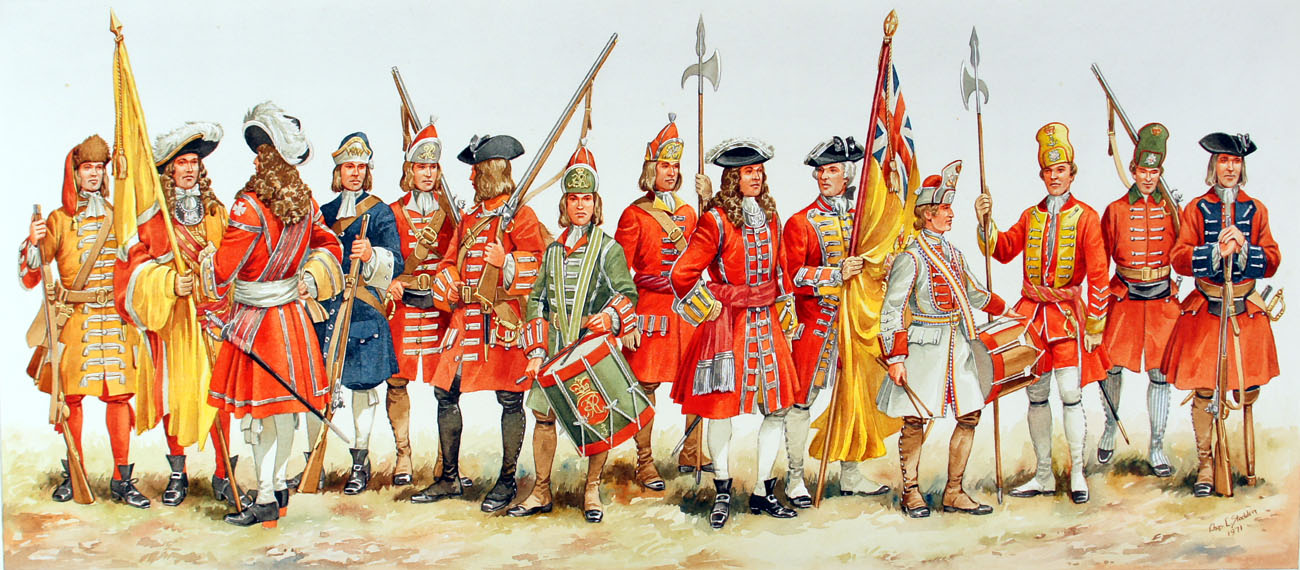
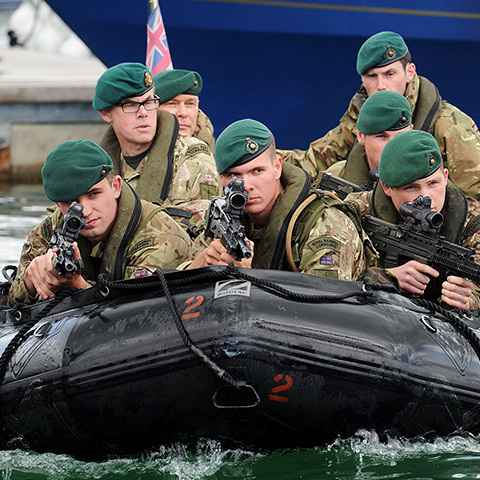
The Royals or Bootnecks* as they are nicknamed over in the United Kingdom. Are some really tough and interesting Folks that you really want on your side in a fight.

I myself got lucky again. As I was able to go and see their Regimental Museum over in the UK. It’s a interesting place by the way.
But enough of that. These Folks have a really good Reputation. As they run one of the hardest selection & training programs in the world. With a huge wash out rate.
SA80 A2 ACOGRIFLE
The SA80 A2 ACOG is the standard Royal Marine weapon, and is capable of firing single rounds or burst. It enables Marines to deploy quick and accurate fire at short range; and accurate fire at longer ranges.
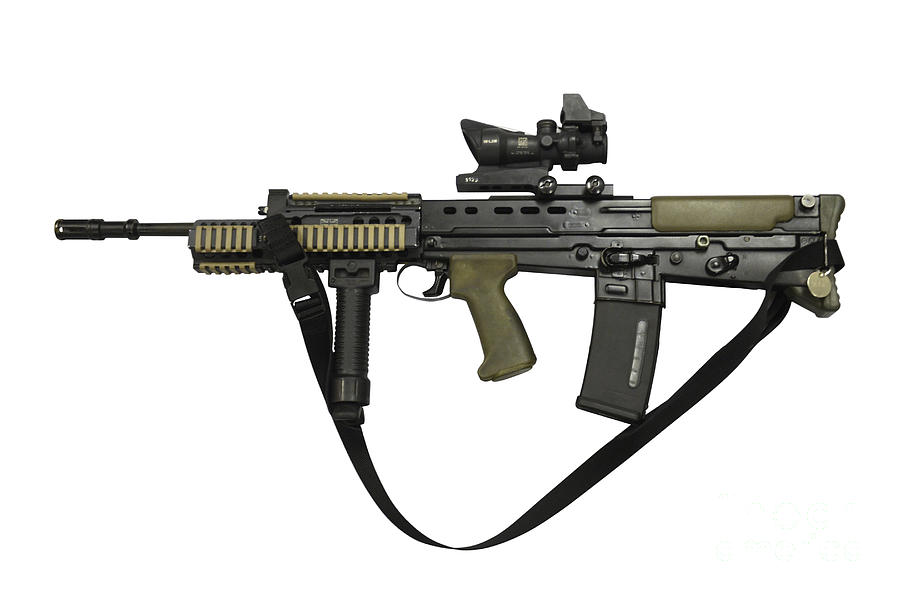
(It’s a Bullpup design that fires the standard 5.56mm NATO round) 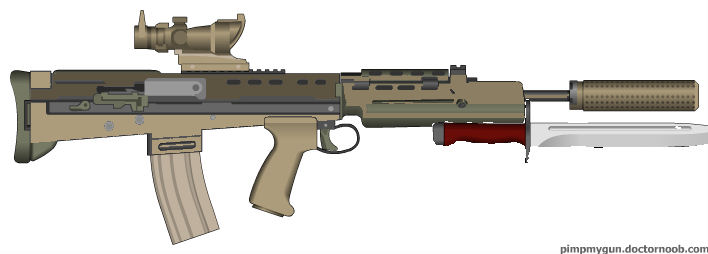
For their side arm they are using a 9mm Glock 17.
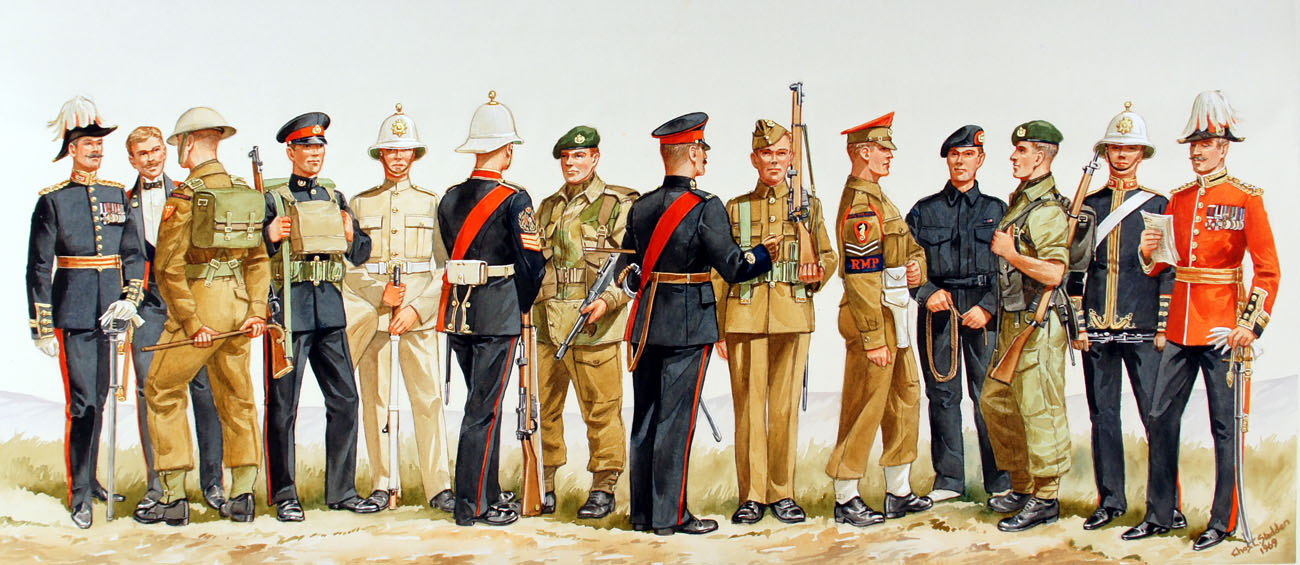

* Another nickname, as if you are stupid enough to fight them. You will probably find yourself on the ground with a boot on your neck right quick!

Grumpy
Royal Marines
| Corps of Royal Marines | |
|---|---|

Badge
|
|
| Founded | 1664 |
| Country | |
| Allegiance | Elizabeth II |
| Branch | |
| Type | Marine commando |
| Role | Expeditionary & amphibious warfare |
| Size | 7,760 Royal Marines 750 Royal Marines Reserve |
| Naval Staff Offices | Whitehall, London, England |
| Nickname(s) | “Royals” “Bootnecks” “The Commandos” “Jollies” |
| Motto(s) | “Per Mare, Per Terram” (Latin) “By Sea, By Land” |
| Colours | Blue Gold Green Red |
| March | Quick: “A Life on the Ocean Wave” Slow: “Preobrajensky” |
| Engagements | |
| Website | www.royalnavy.mod.uk/ |
| Commanders | |
| Captain General | Prince Philip, Duke of Edinburgh |
| First Sea Lord | Sir Philip Jones |
| Commandant General | Major General Robert Magowan |
| Insignia | |
| Non‑ceremonial flag | |
 |
| Her Majesty’s Naval Service of the British Armed Forces |
|---|
| Components |
|
|
| History and future |
|
|
| Ships |
| Personnel |
| Auxiliary services |
The Corps of Royal Marines (RM) is the United Kingdom‘s amphibious light infantry force, forming part of the Naval Service, along with the Royal Navy.[1] The Royal Marines were formed in 1755 as the Royal Navy’s infantry troops. However, the marines can trace their origins back to the formation of the English Army‘s “Duke of York and Albany’s maritime regiment of Foot” at the grounds of the Honourable Artillery Company on 28 October 1664.[2]
As a highly specialised and adaptable light infantry force, the Royal Marines are trained for rapid deployment worldwide and capable of dealing with a wide range of threats. The Royal Marines are organised into a light infantry brigade (3 Commando Brigade) and a number of separate units, including 1 Assault Group Royal Marines, 43 Commando Royal Marines formerly Fleet Protection Group Royal Marines (previously the Comacchio Group), and a company strength commitment to the Special Forces Support Group. The Corps operates in all environments and climates, though particular expertise and training is spent on amphibious warfare, arctic warfare, mountain warfare, expeditionary warfare, and its commitment to the UK’s Rapid Reaction Force.
Throughout its history, the Royal Marines have seen action in a number of major wars often fighting beside the British Army – including the Seven Years’ War, the Napoleonic Wars, the Crimean War, World War I and World War II. In recent times the Corps has been largely deployed in expeditionary warfare roles such as the Falklands War, the Gulf War, the Bosnian War, the Kosovo War, the Sierra Leone Civil War, the Iraq War and the War in Afghanistan. The Royal Marines have close international ties with allied marine forces, particularly the United States Marine Corps and the Netherlands Marine Corps (Dutch: Korps Mariniers).[3][4] Today, the Royal Marines are an elite fighting force within the British Armed forces, having undergone many substantial changes over time.[5]
Contents
[hide]
History[edit]
The Royal Marines can trace its origins back as far as 28 October 1664 when at the grounds of the Honourable Artillery Company “the Duke of York and Albany’s maritime regiment of foot” was first formed.[2]
Early British Empire[edit]
On 5 April 1755, His Majesty’s Marine Forces, fifty Companies in three Divisions, headquartered at Chatham, Portsmouth, and Plymouth, were formed by Order of Council under Admiralty control.[2]
In 1788 a detachment of four companies of marines, under Major Robert Ross, accompanied the First Fleet to protect a new colony at Botany Bay (New South Wales). Due to an error the Fleet left Portsmouth without its main supply of ammunition, and were not resupplied until the Fleet docked in Rio de Janeiro midway through the voyage.[7] One scholar has claimed that the Marines deliberately spread smallpox among Australia’s indigenous population in order to reduce its military effectiveness, but this is not corroborated by contemporaneous records of the settlement and most researchers attribute the indigenous smallpox outbreak to other causes.[8][9]
In 1802, largely at the instigation of Admiral the Earl St. Vincent, they were titled the Royal Marines by King George III. The Royal Marines Artillery (RMA) was formed as a separate unit in 1804 to man the artillery in bomb ketches. These had been manned by the Army’s Royal Regiment of Artillery, but a lawsuit by a Royal Artillery officer resulted in a court decision that Army officers were not subject to Naval orders. As RMA uniforms were the blue of the Royal Regiment of Artillery they were nicknamed the “Blue Marines” and the Infantry element, who wore the scarlet uniforms of the British infantry, became known as the “Red Marines”, often given the semi-derogatory nickname “Lobsters” by sailors.[10] A fourth division of the Royal Marines, headquartered at Woolwich, was formed in 1805.[11]
During the Napoleonic Wars the Royal Marines participated in every notable naval battle on board the Royal Navy’s ships and also took part in multiple amphibious actions. Marines had a dual function aboard ships of the Royal Navy in this period; routinely, they ensured the security of the ship’s officers and supported their maintenance of discipline in the ship’s crew, and in battle, they engaged the enemy’s crews, whether firing from positions on their own ship, or fighting in boarding actions.[12] In the Caribbean theatre volunteers from freed French slaves on Marie-Galante were used to form Sir Alexander Cochrane‘s first Corps of Colonial Marines. These men bolstered the ranks, helping the British to hold the island until reinforcements arrived. This practice was repeated during the War of 1812, where escaped American slaves were formed into Cochrane‘s second Corps of Colonial Marines. These men were commanded by Royal Marines officers and fought alongside their regular Royal Marines counterparts at the Battle of Bladensburg.[13] Throughout the war Royal Marines units raided up and down the east coast of America including up the Penobscot River and in the Chesapeake Bay. They fought in the Battle of New Orleans and later helped capture Fort Bowyer in Mobile Bay in what was the last action of the war.[14]
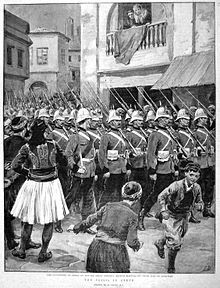
Royal Marines parade in the streets of Chania in spring 1897, following British occupation.
In 1855 the Infantry forces were renamed the Royal Marines Light Infantry (RMLI). During the Crimean War in 1854 and 1855, three Royal Marines earned the Victoria Cross, two in the Crimea and one in the Baltic.[15] In 1862 the name was slightly altered to Royal Marine Light Infantry. The Royal Navy did not fight any other ships after 1850 and became interested in landings by Naval Brigades. In these Naval Brigades, the function of the Royal Marines was to land first and act as skimishers ahead of the sailor Infantry and Artillery. This skirmishing was the traditional function of Light Infantry.[16] For most of their history, British Marines had been organised as fusiliers. In the rest of the 19th Century the Royal Marines served in many landings especially in the First and Second Opium Wars (1839–1842 and 1856–1860) against the Chinese. These were all successful except for the landing at the Mouth of the Peiho in 1859, where Admiral Sir James Hopeordered a landing across extensive mud flats.[17]
The Royal Marines also played a prominent role in the Boxer Rebellion in China (1900), where a Royal Marine earned a Victoria Cross.[15]
Pursuing a career in the Marines had been considered social suicide through much of the 18th and 19th centuries since Marine officers had a lower standing than their counterparts in the Royal Navy. An effort was made in 1907 through the common entry or “Selborne Scheme” to reduce the professional differences between RN and RM officers through a system of common entry that provided for an initial period of service where both groups performed the same roles and underwent the same training.[18]
World wars[edit]
First World War[edit]
During the First World War, in addition to their usual stations aboard ship, Royal Marines were part of the Royal Naval Division which landed in Belgium in 1914 to help defend Antwerp and later took part in the amphibious landing at Gallipoliin 1915. It also served on the Western Front. The Division’s first two commanders were Royal Marine Artillery Generals. Other Royal Marines acted as landing parties in the Naval campaign against the Turkish fortifications in the Dardanelles before the Gallipoli landing. They were sent ashore to assess damage to Turkish fortifications after bombardment by British and French ships and, if necessary, to complete their destruction. The Royal Marines were the last to leave Gallipoli, replacing both British and French troops in a neatly planned and executed withdrawal from the beaches.[19]
The Royal Marines also took part in the Zeebrugge Raid in 1918. Five Royal Marines earned the Victoria Cross in the First World War, two at Zeebrugge, one at Gallipoli, one at Jutland and one on the Western Front.[15]
Between the wars[edit]
After the war Royal Marines took part in the allied intervention in Russia. In 1919, the 6th Battalion RMLI mutinied and was disbanded at Murmansk. The Royal Marine Artillery (RMA) and Royal Marine Light Infantry (RMLI) were amalgamated on 22 June 1923.[20] Post-war demobilisation had seen the Royal Marines reduced from 55,000 (1918) to 15,000 in 1922 and there was Treasury pressure for a further reduction to 6,000 or even the entire disbandment of the Corps. As a compromise an establishment of 9,500 was settled upon but this meant that two separate branches could no longer be maintained. The abandonment of the Marine’s artillery role meant that the Corps would subsequently have to rely on Royal Artillery support when ashore, that the title of Royal Marines would apply to the entire Corps and that only a few specialists would now receive gunnery training. As a form of consolation the dark blue and red uniform of the Royal Marine Artillery now became the full dress of the entire Corps. Royal Marine officers and SNCO’s however continue to wear the historic scarlet in mess dress to the present day. The ranks of private, used by the RMLI, and gunner, used by the RMA, were abolished and replaced by the rank of Marine.[21]
Second World War[edit]
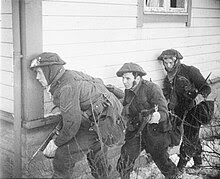
British Commandos in action during Operation Archery, Norway.
During the Second World War, a small party of Royal Marines were first ashore at Namsos in April 1940, seizing the approaches to the Norwegian town preparatory to a landing by the British Army two days later. The Royal Marines formed the Royal Marine Division as an amphibiously trained division, parts of which served at Dakar and in the capture of Madagascar. After the assault on the French naval base at Antsirane in Madagascar was held up, fifty Sea Service Royal Marines from HMS Ramilles commanded by Captain Martin Price were landed on the quay of the base by the British destroyer HMS Anthony after it ran the gauntlet of French shore batteries defending Diego Suarez Bay. They then captured two of the batteries, which led to a quick surrender by the French.[22]
In addition the Royal Marines formed Mobile Naval Base Defence Organisations (MNBDOs) similar to the United States Marine Corps Defense Battalions. One of these took part in the defence of Crete. Royal Marines also served in Malaya and in Singapore, where due to losses they were joined with remnants of the 2nd Battalion, Argyll and Sutherland Highlanders to form the “Plymouth Argylls”. The Royal Marines formed one Commando (A Commando) which served at Dieppe. One month after Dieppe, most of the 11th Royal Marine Battalion was killed or captured in an ill staged amphibious landing at Tobruk in Operation Agreement. Again, the Marines were involved with the Argyll and Sutherland Highlanders, this time the 1st Battalion. In 1942 the Infantry Battalions of the Royal Marine Division were re-organised as Commandos, joining the British Army Commandos. The Division command structure became a Special Service Brigade command. The support troops became landing craft crew and saw extensive action on D-Day in June 1944.[23]
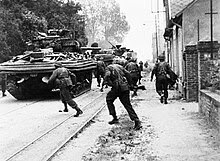
Men of No 4 (Army) Commandoengaged in house to house fighting with the Germans at Riva Bella, near Ouistreham.
A total of four Special Service Brigades (later Commando brigade) were raised during the war, and Royal Marines were represented in all of them. A total of nine RM Commandos (Battalions) were raised during the war, numbered from 40 to 48. 1 Commando Brigade had just one RM Battalion, No 45 Commando. 2 Commando Brigade had two RM battalions, Nos 40 and 43 Commandos. 3 Commando Brigade also had two, Nos 42 and 44 Commandos. 4 Commando Brigade was entirely Royal Marine after March 1944, comprising Nos 41, 46, 47and 48
In January 1945, two further RM Brigades were formed, 116th Brigade and 117th Brigade. Both were conventional Infantry, rather than in the Commando role. 116th Brigade saw some action in the Netherlands, but 117th Brigade was hardly used operationally. In addition one Landing Craft Assault (LCA) unit was stationed in Australia late in the war as a training unit. In 1946 the Army Commandos were disbanded, leaving the Royal Marines to continue the Commando role (with supporting Army elements). A number of Royal Marines served as pilots during the Second World War. It was a Royal Marines officer who led the attack by a formation of Blackburn Skuas that sank the Königsberg. Eighteen Royal Marines commanded Fleet Air Arm squadrons during the course of the war, and with the formation of the British Pacific Fleet were well-represented in the final drive on Japan. Captains and Majors generally commanded squadrons, whilst in one case Lt. Colonel R.C. Hay on HMS Indefatigable was Air Group Co-ordinator from HMS Victorious of the entire British Pacific Fleet.[25]
Throughout the war Royal Marines continued in their traditional role of providing ships detachments and manning a proportion of the guns on Cruisers and Capital Ships. They also provided the crew for the UK’s Minor Landing craft and the Royal Marines Armoured Support Group manned Centaur IV tanks on D Day one of these is still on display at Pegasus Bridge.[26]
Only one Marine (Corporal Thomas Peck Hunter of 43 Commando) was awarded the Victoria Cross in the Second World War for action at Lake Comacchio in Italy. Hunter was the most recent RM Commando to be awarded the medal.[15] The Royal Marines Boom Patrol Detachment under Blondie Haslar carried out Operation Frankton and provided the basis for the post-war continuation of the SBS.[27]
Post-colonial era[edit]
The Corps underwent a notable change after 1945 however, when the Royal Marines took on the main responsibility for the role and training of the British Commandos. The Royal Marines have an illustrious history, and since their creation in 1942 Royal Marines Commandos have engaged on active operations across the globe, every year, except 1968.[28]Notably they were the first ever military unit to perform an air assault insertion by helicopter, during the Suez Crisis in 1956.[29] They were also part of the land element during the 1982 Falklands War.[30]
Cold War[edit]

Royal Marines during an exercise in Scotland.
During the Cold War the Royal Marines were earmarked to reinforce NATO‘s northernmost command Allied Forces North Norway. Therefore 3 Commando Brigade began to train annually in Northern Norway and had large stores of vehicles and supplies pre-positioned there. At the end of the Cold War in 1989 the structure of the Royal Marines was as follows:[31]
- Commandant General Royal Marines, London
- 3 Commando Brigade, Plymouth
- 40 Commando, Taunton
- 42 Commando, Bickleigh
- 45 Commando, Arbroath
- 29 Commando Regiment, Royal Artillery, Plymouth, one battery in Arbroath, (18x L118 light guns)
- 4 Assault Squadron, Plymouth (4x LCU Mk.9, 4x LCVP Mk.4, 2x Centurion BARV), served aboard HMS Fearless (L10)
- 539 Assault Squadron, Plymouth (4x LCU Mk.9, 4x LCVP Mk.4, 2x Centurion BARV), served aboard HMS Intrepid (L11)
- 59 Independent Commando Squadron, Royal Engineers, Plymouth, one troop in Arbroath
- 3 Commando Brigade Air Squadron, RNAS Yeovilton, (12x Gazelle AH.1, 6x Lynx AH.1)
- 2 Raiding Squadron, Royal Marines (Reserve),Plymouth
- 131 Independent Commando Squadron, Royal Engineers (V), Plymouth
- 289 Commando Battery, Royal Artillery (V), Plymouth (6x L118 light guns)
- Special Boat Service, Poole, under operational control of United Kingdom Special Forces
- Comacchio Group, HMNB Clyde, guarded HMNB Clyde and the UK’s naval nuclear weapons stored at RNAD Coulport
- Royal Marines Police, Plymouth
- Commando Training Centre Royal Marines, Lympstone
- Royal Marines Reserve (RMR), Plymouth
- RMR Bristol, Bristol
- RMR London, Wandsworth
- RMR Merseyside, Liverpool
- RMR Scotland, Edinburgh
- RMR Tyne, Newcastle
- 3 Commando Brigade, Plymouth
Note: “(V)” denotes British Army reserve units.
Today[edit]
Personnel[edit]
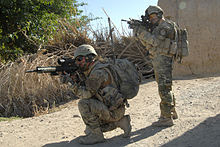
Royal Marines in Sangin, Afghanistan, 2010
The Royal Marines are part of the Naval Service and under the full command of Fleet Commander. The rank structure of the corps is similar to that of the British Army with officers and other ranks recruited and initially trained separately from other naval personnel. Since 2017 women have been able to serve in all roles in the Royal Marines. On average, 1,200 recruits and 2,000 potential recruits, and 400 potential officers attend training courses and acquaint courses at CTCRM every year.
At its height in 1944 during the Second World War, more than 70,000 people served in the Royal Marines. Following the Allied victory the Royal Marines were quickly reduced to a post-war strength of 13,000. When National Service finally came to an end in 1960, the Marines were again reduced, but this time to an all Commando-trained force of 9,000 personnel.[32] As of October 2014 the Royal Marines had a strength of 7,760 Regular[33] and 750 Royal Marines Reserve, giving a combined component strength of around 8,510 personnel. The Royal Marines are the only European marine force capable of conducting amphibious operations at brigade level.[34]
Equipment[edit]
Infantry The basic infantry weapon of the Royal Marines is the L85A2 assault rifle,[35] sometimes fitted with the L123A3underslung grenade launcher.[36] Support fire is provided by the L110A1 light machine gun,[36] the L7A2 General Purpose Machine Gun (GPMG)[37] and the L111A1 heavy machine gun[38] (which is often mounted on an armoured vehicle); indirect fire by the L16A2 81mm mortar.[38] Sniper rifles used include the L115A3,[37] produced by Accuracy International. More recently the L129A1 has come into service as the designated marksman rifle.[36] Other weapons include the Javelin Anti-Tank missile,[39] the L107A1 pistol,[35] the L131A1 pistol[35] and the Fairbairn-Sykes Fighting Knife.
Armour The Royal Marines maintain no heavy armoured units, instead, they operate a fleet of lightly armoured and highly mobile vehicles intended for amphibious landings or rapid deployment. The primary armoured fighting vehicle operated by the Armoured Support Group is the BvS 10 Viking All Terrain Armoured Vehicle.[40] Other, lighter vehicles include the Land Rover Wolf Armoured Patrol Vehicle, the Jackal (MWMIK) Armoured Vehicle and the Pinzgauer High Mobility All Terrain Vehicle.[41]
Artillery Field artillery support is provided by 29th Commando Regiment Royal Artillery of the British Army using the L118 Light Gun, a 105 mm towed howitzer. The regiment is Commando-trained.
Aviation The Commando Helicopter Force of the Fleet Air Arm provides transport helicopters in support of the Royal Marines. It currently uses both Merlin HC4/4A medium-lift transport and Wildcat AH1 attack helicopters to provide direct aviation support for the Corps. In addition, the Royal Air Force provides Chinook heavy-
Vessels The Royal Marines operate a varied fleet of military watercraft designed to transport troops and material from ship to shore or conduct river or estuary patrols. These include the 2000TDX Landing Craft Air Cushion, the Mk10 Landing Craft Utility, the Mk5 Landing Craft Vehicle Personnel and the SDV Mk8 Mod 1 Swimmer Delivery Vehicle for special forces. Other smaller amphibious craft such as the Offshore Raiding Craft, Rigid Raider and Inflatable Raiding Craft are in service in much greater numbers.
-
BvS 10 Vikings of the Royal Marines Armoured Support Group on exercise.
-
A Royal Marines Landing Craft Vehicle Personnel (LCVP) Mk5.
Formation and structure[edit]
The overall head of the Royal Marines is Her Majesty Queen Elizabeth II, in her role as Commander-in-Chief of the British Armed Forces. The ceremonial head of the Royal Marines is the Captain General Royal Marines (equivalent to the Colonel-in-Chief of a British Army regiment). The current Captain-General is Prince Philip, Duke of Edinburgh. Full Command of the Royal Marines is vested in the Fleet Commander (FLTCDR)[42] with the Commandant General Royal Marines, a major-general, embedded within the Navy Command Headquarters (NCHQ) as Commander UK Amphibious Force (COMUKAMPHIBFOR).
The operational capability of the corps comprises a number of battalion-plus sized units, of which five are designated as “commandos”:
- 40 Commando (known as Forty Commando) based at Norton Manor Barracks, Taunton, Somerset, England
- 42 Commando (known as Four Two Commando) based at Bickleigh Barracks, Plymouth, Devon, England
- 43 Commando Fleet Protection Group Royal Marines based at HM Naval Base Clyde, Helensburgh, Argyll and Bute (Previously Comacchio Group).
- 45 Commando (known as Four Five Commando) based at RM Condor, Arbroath, Angus, Scotland
- 30 Commando Information Exploitation Group[43] based at Stonehouse Barracks, Plymouth
- Commando Logistic Regiment based at Chivenor, Devon
- Special Boat Service based at RM Poole, Dorset (although Full Command is retained by CINCFLEET, Operational Command of SBS RM is assigned to Director Special Forces).
- 1 Assault Group Royal Marines based at RM Tamar, Devonport.
Each Commando Unit will rotate through one of three roles every six months.
- Lead Commando – This unit will be the first unit called upon in case of short-notice operations anywhere around the world.
- Force Generating – Training (Force Generating) to assume the role of Lead Commando
- Standing task – general duties unit
With the exception of the 43 Commando Fleet Protection Group and Commando Logistic Regiment, which are each commanded by a full colonel, each of these units is commanded by a lieutenant-colonel of the Royal Marines, who may have sub-specialised in a number of ways throughout his career.[44]
3 Commando Brigade[edit]
Operational command of the five commandos and the Commando Logistics Regiment is delegated to 3 Commando Brigade Royal Marines, of which they are a part. Based at Stonehouse Barracks, the brigade exercises control as directed by either CINCFLEET or the Permanent Joint Headquarters. As the main combat formation of the Royal Marines, the brigade has its own organic capability to it in the field, 30 Commando Information Exploitation Group, a battalion sized formation providing information operations capabilities, life support and security for the Brigade Headquarters.
43 Commando Fleet Protection Group Royal Marines, responsible for the security of the United Kingdom’s nuclear deterrent and other security-related duties was originally outside the brigade however from April 2012 it moved into it.[45] It also provides specialist boarding parties and snipers for the Royal Navy worldwide, for roles such as embargo enforcement, counter-narcotics, counter-piracy and counter-insurgency activities of the Royal Navy. It is the largest unit in the brigade, at 790 strong,[45] with a different structure from the other Commandos.
Independent elements[edit]
The independent elements of the Royal Marines are:[46]
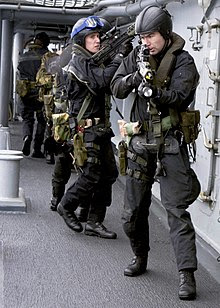
A Royal Marines team boards US Navy destroyer USS O’Bannon.
- Commando Training Centre: This is the training unit for the entire corps, and consists of three separate sections:
- Commando Training Wing: This is the initial basic commando training section for new recruits to the Royal Marines, and the UK Forces All Arms Commando Course.
- Specialist Wing: This provides specialist training in the various trades which Marines may elect to join once qualified and experienced in a Rifle Company.
- Command Wing: This provides command training for both officers and NCOs of the Royal Marines.
- 1 Assault Group Royal Marines: Provides training in the use of landing craftand boats, and also serves as a parent unit for the three assault squadrons permanently embarked on the Royal Navy‘s amphibious ships.
- 4 Assault Squadron—HMS Bulwark
- 6 Assault Squadron—HMS Albion
- 9 Assault Squadron—HMS Ocean
- Special Boat Service (SBS) are naval special forces and under operational command of Director Special Forces, UK Special Forces Group. It is commanded by a lieutenant colonel qualified as a swimmer canoeist. SBS responsibilities include water-borne operations, maritime counter-terrorism and other special forces tasks.
- Royal Marines Band Service provides regular bands for the Royal Navy and provides expertise to train RN Volunteer Bands. Musicians have an important secondary role as medics and field hospital orderlies. Personnel may not be commando trained, wearing a dark blue beret instead of green; until 2017, the band service was the only branch of the Royal Marines to admit women.
Structure of a commando[edit]
The Commando Flash and dagger worn on the sleeve
The three commando units are each organised into six companies, further organised into platoon-sized troops, as follows:[47]
Command company
- Main HQ
- Tactical HQ
- Reconnaissance Troop with a sniper section
- Mortar Troop
- Anti-Tank (AT) Troop
- Medium Machine Gun Troop
2X Close Combat Companies
- Company Headquarters
- 3X Close Combat Troops
2X Stand Off Companies
- Company Headquarters
- Heavy Machine Gun (HMG) Troop
- AT Troop
- Close Combat Troop.
Logistic Company
- A Echelon 1
- A Echelon 2
- FRT (Forward Repair Team)
- RAP (Regimental Aid Post)
- B Echelon
In general a rifle company Marine will be a member of a four-man fire team, the building block of commando operations. A Royal Marine works with his team in the field and shares accommodation if living in barracks. This structure is a recent development, formerly Commandos were structured similarly to British Army light Infantry Battalions.[48]
Amphibious Task Group[edit]
Formerly known as the Amphibious Ready Group, the Amphibious Task Group (or ATG) is a mobile, balanced amphibious warfare force, based on a Commando Group and its supporting assets, that can be kept at high readiness to deploy into an area of operations. The ATG is normally based around specialist amphibious ships, most notably HMS Ocean, the largest ship in the British fleet. Ocean was designed and built to accommodate an embarked commando and its associated stores and equipment. The strategy of the ATG is to wait “beyond the horizon” and then deploy swiftly as directed by HM Government. The whole amphibious force is intended to be self-sustaining and capable of operating without host-nation support. The concept was successfully tested in operations in Sierra Leone.[49]
Commando Helicopter Force[edit]
The Commando Helicopter Force (CHF) forms part of the Fleet Air Arm. It comprises three helicopter squadrons and is commanded by the Joint Helicopter Command.[50] It consists of both Royal Navy (RN) and Royal Marines personnel. RN personnel need not be commando trained. The CHF is neither under the permanent control of 3 Commando Brigade nor that of the Commandant General Royal Marines, but rather is allocated to support Royal Marines units as required. It uses both Merlin HC4/4A medium-lift and Wildcat AH1 light transport/reconnaissance helic
Commando Forces 2030 & Maritime Operations Commando[edit]
On 11 April 2017 the First Sea Lord, Admiral Sir Philip Jones, announced[51] that the Royal Marines were to be restructured. As part of this 42 Commando is to be re-roled into a specialist Maritime Operations Commando. This is in turn part of the Commando Forces 2030 strategy.[52]
Selection and training[edit]
Royal Marines are required to undergo one of the longest and most physically demanding specialist infantry training regimes in the world. Recruit training lasts for 32 weeks for Marines and 60 weeks for officers. Potential recruits must be male and aged 16 to 32 (18 to 25 for Commissioned Officers);[53] however by the end of 2018 women will be permitted to apply after the ban on women in Ground Close Combat roles was lifted in July 2016.[54] and they must first undertake a series of interviews, medical tests, an eye/sight test, psychometric tests and a PJFT (Pre-joining fitness test).[55] Once a potential recruit passes these, enlisted recruits undertake a 3-day selection course called PRMC (Potential Royal Marine Course) and potential officers undertake POC (Potential Officer Course) – both take place at the Commando Training Centre Royal Marines (CTCRM) in Lympstone, Devon. Officers must also take the Admiralty Interview Board(AIB).[56] Upon passing the 3-day course, recruits then start basic recruit training (RT) at CTCRM.[55] Unlike in many countries, enlisted Marines and officer Marines often train together for the first 32 weeks. A large proportion of training is carried out on Dartmoor‘s inhospitable terrain and Woodbury Common woodland. The culmination of their training ends with their infamous commando courses which they initially pre-train for. The commando courses are a series of physical and mental endurance tests that highlight their military professionalism.
Throughout the recruit training, Royal Marines learn and develop many military skills such as weapons handling, marksmanship and proficiency with different firearms, personal administration, marching and parade ground skills, map reading and navigation, physical fitness and mental toughness development, fieldcraft skills such as camouflage and stalking, basic survival techniques, patrolling and sentry duty development, unarmed and armed close quarters combat(CQC), first aid, underwater escape, chemical biological radiological nuclear (CBRN) training, military communications and signals, teamwork skills, amphibious landings training, and leadership skills for officers to name a few.
The best recruit to finish training is awarded the Kings Badge. King George V directed that his Royal Cypher, surrounded by a laurel wreath, would be known as the King’s Badge, and would be awarded to the best all round recruit in the King’s Squad, provided that he was worthy of the honour. The badge was to be carried on the left shoulder, and worn in every rank. The King’s Badge is not awarded to every squad, and is only presented if a recruit measures up to the very exacting standards required.[57]
Throughout his career, a Marine can specialise in a number of different roles upon completion of their respective courses after spending 1–2 years as a general duties (GD) Marine. Examples of some specialisations and different courses includes the mountain leader (ML), physical training instructor (PTI), Assault Engineer (AE), military police (MP), sniper course, medical assistant, pilot, reconnaissance operator (RO), drill instructor, driver, clerk, chef, signaller, combat intelligence, armourer, and heavy weapons training. Royal Marines can also apply for swimmer canoeist/Special Boat Service selection (SBS) or any other branch of the UKSF.[58] All Royal Marines will also conduct training exercises on differing military skills on a regular basis including development in mountain, arctic, jungle, amphibious and desert warfare. They can also be involved in exchange training programs with other countries forces – particularly the United States Marine Corps[3] and the Netherlands Marine Corps/Korps Mariniers.[4]
Customs and traditions[edit]
The Royal Marines have a proud history and unique traditions. With the exceptions of “Gibraltar” and the laurel wreath for the Battle of Belle Island, their colours (flags) do not carry battle honours in the manner of the regiments of the British Army or of the US Marine Corps, but rather the “globe itself” as a symbol of the Corps.[59]
The heraldic crest of the Royal Marines commemorates the history of the Corps. The Lion and Crown denotes a Royal regiment. King George III conferred this honour in 1802 “in consideration of the very meritorious services of the Marines in the late war.” The “Great Globe itself” was chosen in 1827 by King George IV in place of Battle honours to recognise the Marines’ service and successes in multiple engagements in every quarter of the world.[10] The laurels are believed to honour the gallantry they displayed during the investment and capture of Belle Isle, off Lorient, in April–June 1761. The word Gibraltar refers to the Capture of Gibraltar by a force of Anglo-Dutch Marines in 1704 and the subsequent defence of the strategic fortress throughout a nine-month siege against a numerically superior Franco-Spanish force.[10] Their determination and valour throughout the siege led to a contemporary report published in The Triumphs of Her Majesty’s Arms in 1707 to announce:
Encouraged by the Prince of Hesse, the garrison did more than could humanly be expected, and the English Marines gained an immortal glory
— referred to by Paul Harris Nicolas, Historical record of the Royal marine forces[60]
There are no other battle honours displayed on the colours of the four battalion-sized units of the current Corps. The Latin motto “Per Mare Per Terram” translates into English as “By Sea By Land”. Believed to have been first used in 1775 this motto describes the Royal Marines ability in fighting both afloat on-board ships of the Royal Navy, as well as ashore in their many land engagements. The fouled anchor, incorporated into the emblem in 1747, is the badge of the Lord High Admiral and shows that the Corps is part of the Naval Service.[59]
The regimental quick march of the Corps is “A Life on the Ocean Wave“, while the slow march is the march of the Preobrazhensky Regiment, awarded to the Corps by Admiral of the Fleet Earl Mountbatten of Burma on the occasion of the Corps’s tercentenary in 1964. Lord Mountbatten was Life Colonel Commandant of the Royal Marines until his murder by the IRA in 1979.[61]
The Royal Marines are allowed by the Lord Mayor of the City of London to march through the City as a regiment in full array. This dates to the charter of Charles IIthat allowed recruiting parties of the Admiral’s Regiment of 1664 to enter the City with drums beating and colours flying.[62]
Uniforms[edit]
The modern Royal Marines retain a number of distinctive uniform items. These include the green “Lovat” service dress worn with the green beret, the dark blue parade dress worn with either the white Wolseley Pattern Helmet (commonly referred to as “pith helmet“) or white and red peaked cap, the scarlet and blue mess dress for officers and senior non-commissioned officers and the white hot-weather uniform of the Band Service.[63]
For historical information regarding Marine uniforms, see Uniforms of the Royal Marines.
Ranks and insignia[edit]
See also: Royal Marines officer ranks and Royal Marines other ranks
| NATO code | OF-10 | OF-9 | OF-8 | OF-7 | OF-6 | OF-5 | OF-4 | OF-3 | OF-2 | OF-1 | OF(D) | Student officer | ||||||||||||||||||||||||||||||
|---|---|---|---|---|---|---|---|---|---|---|---|---|---|---|---|---|---|---|---|---|---|---|---|---|---|---|---|---|---|---|---|---|---|---|---|---|---|---|---|---|---|---|
(Royal Marines) (Edit) |
No equivalent |  |
 |
 |
 |
 |
 |
 |
 |
 |
 |
 |
No equivalent | |||||||||||||||||||||||||||||
| General | Lieutenant-General | Major-General | Brigadier | Colonel | Lieutenant-Colonel | Major | Captain | First Lieutenant | Second Lieutenant | Officer Cadet | ||||||||||||||||||||||||||||||||
| NATO Code | OR-9 | OR-8 | OR-7 | OR-6 | OR-5 | OR-4 | OR-3 | OR-2 | OR-1 | |||||||||||||||||||
|---|---|---|---|---|---|---|---|---|---|---|---|---|---|---|---|---|---|---|---|---|---|---|---|---|---|---|---|---|
(Royal Marines) (Edit) |
 |
 |
 |
 |
No equivalent |  |
 |
No equivalent | No insignia | |||||||||||||||||||
| Warrant Officer Class 1 | Warrant Officer Class 2 | Colour Sergeant | Sergeant | Corporal | Lance Corporal | Marine | ||||||||||||||||||||||
Order of precedence[edit]
As the descendant of the old marine regiments of the British Army, the Royal Marines used to have a position in the order of precedence of the infantry; this was after the 49th Regiment of Foot, the final lineal descendant of which was the Royal Gloucestershire, Berkshire and Wiltshire Regiment (RGBW). Therefore, the Royal Marines would have paraded after the RGBW. This is because the 49th Foot was the last regiment raised prior to the formation of the Corps of Marines as part of the Royal Navy in 1755. In 2007, the RGBW was amalgamated into a large regiment – this new regiment is placed last in the order of precedence, as it is a regiment of rifles. However, as a result of new Army amalgamations the Royal Marines have now been removed from the infantry order of precedence and now always take post, as a constituent part of the Royal Navy (the Senior Service), at the head of the parade alongside the Navy, or alone if the Navy are not represented. Thus, if only the infantry is represented, the Royal Marines would parade before the Grenadier Guards, the senior infantry regiment of the Army.
| Preceded by As part of Naval Service, assumes precedence before all Army units |
British Army order of precedence | Succeeded by British Army |
Associations with other regiments and marines corps[edit]
Argyll and Sutherland Highlanders
Early connections date from Balaclava in the Crimean War and Lucknow during the Indian Mutiny, but the main association stems from World War II. In July 1940, after the fall of Dunkirk, the 5th Battalion, Argyll and Sutherland Highlanders served with the Royal Marine Brigade for over a year. When the battleships HMS Prince of Wales and HMS Repulse were sun
Princess of Wales’s Royal Regiment
The fore-bearer regiments of the Princess of Wales’s Royal Regiment, 31st (Huntingdonshire) Regiment of Foot was initially raised as amphibious troops. They served as Marines for a period. To this day one officer from the Royal Marines serves with the PWRR and Vice Versa. Also the Royal Marine Lanyard is worn by all ranks in Service Dress and Number 2 Dress uniform and barrack dress of PWRR.[64]
Barbados Defence Force
Close links have existed between the Royal Marines and the Barbados Defence Force since 1985 when a bond was established following a series of cross-training exercises in the Caribbean. The Alliance was approved by HM the Queen in 1992.[2]
Netherlands Marine Corps
The Royal Marines have close links with the Royal Netherlands Marine Corps, with whom they conduct NATO exercises throughout the year. Formed during the Anglo-Dutch Wars in 1665, the Dutch Marines distinguished themselves in raids on the English coast, where it is likely they met their future counterparts. Units of the Royal Netherlands Marine Corps work in close co-operation with 3 Commando Brigade of the Royal Marines. Operational units of the Royal Netherlands Marine Corps are fully integrated into this brigade. This integration is known as the United Kingdom-Netherlands Landing Force and is a component of the United Kingdom-Netherlands Amphibious Force as a key strike force during the Cold War to strengthen the Nordic area.[65]
9th Light Armoured Marine Brigade
The 9eme BIMa (9th Marine Infantry Brigade) is a Marine infantry brigade which is one of the two designated amphibious brigades in France. It is unique in being the only ‘all Marine’ Brigade in the French Army; the other amphibious brigade, 6eme Light Armoured Brigade, is composed of a mix of cap badges. 9 BIMa is also a light armoured brigade, formed of two Marine infantry regiments (2 and 3 Regiments d’Infanterie de Marine- 2/3 RIMa) and a tank battalion.[66]
See also[edit]

Deer hunting is a culture-based hobby. It is ideally introduced at a young age to the lucky few whose family either grew up in or currently reside in the rural parts of the United States. It teaches you hard work, following through with a plan, respecting life and death, understanding masculine activities, competing against yourself to achieve your highest capabilities, and the hunter-gatherer mentality.
Around the ages of seven to thirteen, one is usually introduced to deer camp, shooting, and the world of hunting large deer. Prospective hunters are brought into a culture dominated by the yearly event of men leaving their wives for a week or two in order to drive into the middle of nowhere, sit around a camp fire, drink beer and whiskey, discuss weapon choices for killing deer, play poker, and generally just shoot the shit with like-minded family and friends.
The difference between this and a social club is that this phenomenon is centered upon the hope that you will have a successful hunt and return home to a wife that cooks your game and delights in the fact that her husband is one of the select few who can show her that he is capable and willing to provide for her and his family in the simplest form.
Why You Should Learn To Hunt Deer

In a hunter’s mind, there is nothing sexier than a woman who can cook his game efficiently and finds happiness in feeding her family with the healthiest form of meat currently available in the United States. It is a truly amazing thing that represents a family’s ability to respect traditional roles and a feeling of security that they can survive in a non-contemporary society if need be. Deer hunting is the closest a modern man can get to experiencing the hunter-gatherer lifestyle.
I remember my first time at deer camp at the age of fifteen. My grandfather asked me if I wanted to go with my uncles, cousins, and him. I enthusiastically accepted and looked forward to it all summer long. I remember laying out all of my hunting gear and preparing the 30-30 Marlin hunting rifle handed down to me by my father. During these countless hours, I learned my first lessons in deer hunting; taking the initiative, setting a goal, and seeing it all the way through.
When I arrived at camp, I was delighted to see my family. I imagine I had a gleam in my eye that they could relate to when they were my age. I was immediately put to work chopping firewood my first afternoon. This was an important moment and symbolized that I was not only expected to carry my own weight, but also stated that they considered me one of them and not just some young boy who needed to be cradled.
We sat around the fire, cooked baked potatoes, and ate steak. In the evenings, we played poker with a sack of quarters while all of us competed for the coveted fifty-cent piece. When we arose in the morning in the cold and dark, I drank my first cup of coffee with a smile, looked out into the woods, and imagined the record bucks that we would all have hanging from the camp pole.
Although that didn’t happen for me that year, the actual result of being successful my first year at camp really didn’t make a difference. I came home from that trip forever hooked on deer hunting and a solid appreciation for my fellow man. It was a right of passage that had to be earned, and it was one of the greatest moments in my life.
Masculinity And Deer Hunting

As time has gone on, I have been extremely lucky to have successfully hunted and killed multiple deer—as well as many trophy bucks—over the course of my life. It has become an obsession of mine and I wouldn’t trade it for the world. As I became a more experienced hunter, I have leased many different properties and hunted family land. I have prepared properties for deer by running farm machinery, planting crops, and reaped what I have sown with my hard work.
Every year, I look forward to hunting season and proving my skills to myself and other hunters within my hunting world.
In conclusion, deer hunting is a hobby that every man should explore. Almost every state within the U.S. has available hunting land, and with a little research, you should easily be able to go out and hunt. If this article draws any interest, I will follow up with specifics on how to kill deer successfully without the help of anyone.
Read More: 5 Reasons Why Every Man Should Go Hunting Once In Their Lifetime
CONCEALED CARRY INFOGRAPHIC
THE ABILITY TO CARRY A CONCEALED FIREARM PLAYS A SIGNIFICANT ROLE IN OUR ABILITY TO DEFEND LIFE AND LIBERTY.
To help Americans navigate the complicated laws surrounding carrying concealed, we’ve developed a shareable infographic for a quick reference guide.
Do you want to know where your state falls on issuing permits, is it “shall issue” or may issue”? Do you have to notify a police officer during a traffic stop? Get fast answers to those questions and more.
*Carry laws change and vary from state to state. This infographic is for general informational purposes only.
DOWNLOAD
LET US HELP YOU FIND THE FIREARM THAT FITS YOU BEST
Here is the address for it in case the other part of this did not show on the site!
Grumpy
http://www.springfield-armory.com/resources/concealed-carry-infographic/?utm_source=hs_email&utm_medium=email&utm_content=55708496&_hsenc=p2ANqtz-_YIBsDEmkK13N99DfIeq3us_UmZemuLBoWX-diAqyscMC41-5U98ihgeVXWq9DI_K0cpGi_GIoxUGnlvOC9zd8LrM4LQ&_hsmi=55708496

The First Muster By Don Troiani

Salem, Massachusetts, 1637 – The history of the National Guard began on December 13, 1636, when the General Court of the Massachusetts Bay Colony ordered the organization of the colony’s militia companies into three regiments: the North, South and East Regiments.
The colonists had adopted the English militia system which obligated all males, between the ages of 16 and 60, to possess arms and participate in the defense of the community.
The early colonial militia drilled once a week and provided guard details each evening to sound the alarm in case of attack.
The growing threat of the Pequot Indians to the Massachusetts Bay Colony required that the militia be in a high state of readiness.
The organization of the North, South and East Regiments increased the efficiency and responsiveness of the militia. Although the exact date is not known, the first muster of the East Regiment took place in Salem, Massachusetts.
The National Guard continues its historic mission of providing units for the first-line defense of the nation. The 101st Engineer Battalion, Massachusetts Army National Guard, continues the East Regiment’s proud heritage of 350 years of service.
Here is some more about this Old Outfit
The 101st Engineer Battalion is a branch of the Massachusetts National Guard and one of the oldest serving regiments of the United States Army. The 101st Engineer Battalion was originally established as the East Regiment. As the first muster was held on the green in Salem, Massachusetts, Salem is seen as the birthplace of the National Guard.
Contents
[hide]
History[edit]
On 13 December 1636, the Massachusetts General Court ordered the organization of three militia regiments designated as the North, South, and East regiments. The East Regiment (later the Essex Regiment) provided protection and support to the Settlers of the Massachusetts Bay Colony for 139 years. It also fought in the Pequot Indian Wars, King Philip’s War, and the French and Indian War.
The 101st played a key role in the Revolutionary War. Elements fought the British Regulars on 19 April 1775, that started the battle for independence and an active duty regiment saved General George Washington’s Army after the Battle of Long Island in August of 1776. The same element helped the American cause to remain alive in December of 1776 during the Battle of Trenton. They manned the boats for General Washington to cross the Delaware.
During the Civil War, three separate Regiments were established in Essex County. The 8th Massachusetts Volunteer Militia sailed to Annapolis, Maryland, in April of 1861; boarded the USS Constitution; and sailed her to New York Harbor so she would not fall into the hands of the Confederates. The 19th Massachusetts Volunteer Militia fought with the Army of the Potomac and had seven Medal of Honor Recipients. The 50th Massachusetts Volunteer Militia had port duty in Louisiana and had one Medal of Honor recipient.
Although the Battalion did not fight in the War with Spain, the Headquarters Company did. The Battalion was mobilized for World War I. However the Second and Eighth Massachusetts Militia were consolidated to form the 104th Infantry Regiment under the 26th Infantry Division. The remaining cadres were reorganized as the Fifth Pioneer Infantry, but was not deployed overseas.
In 1920, the 5th Pioneer Infantry (Engineers) was re-designated the 101st Engineer Battalion and realigned under the 26th Yankee Division, where it would remain until the division was deactivated in 1993.
The 101st Engineer Battalion fought with the 26th Infantry Division under Patton’s Third Army, and provided the maps to the Third Army for the relief of the 101st Airborne Division during the Battle of the Bulge.
From 1993 to 2006 the 101st Engineer Battalion was aligned under the 42nd Infantry Division.
In 2006, HHC deployed to Kosovo as part of Task Force Falcon.
In October 2008, the Battalion was placed under the new 26th Maneuver Enhancement Brigade, and placed the “YD” patch back on its left shoulder.
In June 2009 the Battalion mobilized for Operation Iraqi Freedom, providing Construction and Combat Engineer support to the Multi-National Division Baghdad/United States Division-Central area. For this, the Battalion earned a Meritorious Unit Commendation ribbon.
Active units within the battalion[edit]
- Battalion Headquarters and Headquarters Company
- Forward Support Company
- 181st Engineer Company (Vertical)
- 182nd Engineer Company (Sapper)
- 183rd Engineer Team (Survey & Design)
- 188th Facilities Engineer Detachment
- 189th Engineer Team (Asphalt)
- 195th Engineer Team (Survey & Design)
- 379th Engineer Company (Horizontal)
Campaign participation credit[edit]
Revolutionary War
- Lexington, Boston, Long Island, Princeton, Saratoga, Monmouth, Trenton, New York 1776, New York 1777, Rhode Island 1777, Rhode Island 1778, Rhode Island, 1779, New Jersey 1780
Civil War
- Peninsula, Manassas, Antietam, Mississippi River, Fredericksburg, Chancellorsville, Gettysburg, Wilderness, Spotsylvania, Cold Harbor, Petersburg, Appomattox, Virginia 1861, North Carolina 1863, Virginia 1863, Virginia 1864
World War I (Bn units were organized under the 104th IN)
World War II
- Northern France, Rhineland, Ardennes-Alsace, Central Europe
Operation Joint Guardian, Battle of the Bulge
- Kosovo (2006-2007)
Global War on Terror (12 Combat Deployments since 11 September 2001)
- Operation Iraqi Freedom
- Operation Enduring Freedom
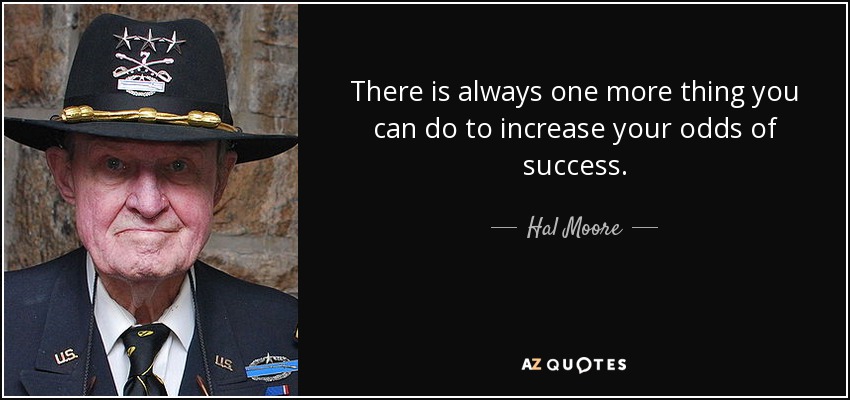 This was also another one Stud of a man! By the Way!
This was also another one Stud of a man! By the Way!
Dear Beloved Reader, It seems that there’s always something new on the Web to be found. So I thought that I would share this with you. I hope that you are having as much fun right now as I am!
Grumpy
PS I also found out that he loved Ice Skating and once flooded and then froze somehow a part of his home to skate. Weird huh?
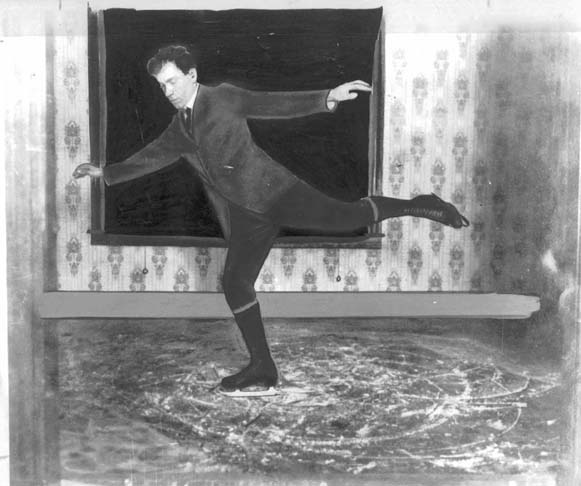
That & here is his old Drivers License
John Garand
| Jean (John) Cantius Garand | |
|---|---|
 |
|
| Born | January 1, 1888 St. Rémi, Quebec, Canada |
| Died | February 16, 1974 (aged 86) Springfield, Massachusetts, U.S. |
| Nationality | Canadian, American |
| Occupation | Designer, Engineer |
| Years active | 1917-1953 |
| Employer | Springfield Armory |
| Known for | First successful semi-automatic rifle put into active military service |
| Notable work | M1 Garand |
| Awards | Meritorious Civilian Service Award in 1941 Medal for Merit in 1944 |
Jean Cantius Garand (/ˈɡærənd/; January 1, 1888 – February 16, 1974), also known as John C. Garand, was a Canadian-American designer of firearms who created the M1 Garand, a semi-automatic rifle that was widely used by the U.S. Army and U.S. Marine Corps during both World War II and the Korean War.
Early life
Garand was one of twelve children (six boys and six girls) born on a farm near St. Rémi, Quebec.[1] His father moved to Jewett City, Connecticut, with the children when their mother died in 1899. All of the boys had the first name St. Jean le Baptiste, but only he went by the first name Jean. The other boys went by their middle names. Several of his brothers were also inventors. The children were employed in a textile mill where Jean learned to speak English while sweeping floors. Jean became interested in guns and learned to shoot after working at a shooting gallery.[2] Jean learned machinist skills while working at the textile mill, and was hired by Browne and Sharpe, a Providence, Rhode Island, toolmaking company in 1909. Later, he found employment with a New York toolmaking firm in 1916, and resumed rifle practice at the shooting galleries along Broadway.[3] Garand became a naturalized United States citizen in 1920.[4]
Designer of firearms
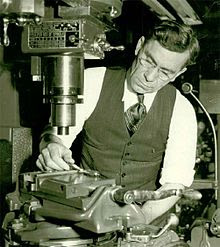
Garand at Springfield Armory
Garand’s fondness for machinery and target shooting blended naturally into a hobby of designing guns, which however took a more vocational turn in 1917. That year the United States Army took bids on designs for a light machine gun, and Garand’s design was eventually selected by the War Department. Garand was appointed to a position with the United States Bureau of Standards in Washington D.C. with the task of perfecting the weapon. The first model was not built until 1919, too late for use in World War I, but the government kept employing Garand as an engineer with the Springfield Armory starting from November 4, 1919 until he retired in 1953.[5]
In Springfield, Massachusetts, Garand was tasked with designing a basic gas-actuated self-loading infantry rifle and carbine that would eject the spent cartridge and reload a new round based on a gas-operated system. Designing a rifle that was practical in terms of effectiveness, reliability, and production, stretched over time; it took fifteen years to perfect the M1 prototype model to meet all the U.S. Army specifications.[6][7] The resulting Semiautomatic, Caliber .30, M1 Rifle was patented by Garand in 1932,[8] approved by the U.S. Army on January 9, 1936, and went into mass production in 1940. It replaced the bolt-action M1903 Springfield and became the standard infantry rifle known as the Garand Rifle.[9] During the World War II, over four million M1 rifles were manufactured.[10] The Garand Rifle proved to be an effective and reliable weapon and was praised by General MacArthur.[11] General Patton wrote, “In my opinion, the M1 rifle is the greatest battle implement ever devised.”[12]
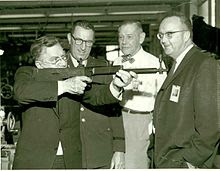
Garand shouldering the Springfield Armory SPIW Concept #1 prototype
In the late 1940s and early 1950s, Garand had designed and built a prototype bullpup rifle. It fired the same cartridge as the M1, but the magazine, action and shape were completely different.[13] It was a select-fire design, and had a firing rate of about 600rpm.[14] When Garand retired in 1953, the second version of the T31 was incomplete, and remained so. The project was scrapped, and the gun was retired to the Springfield Armory museum in 1961.
Garand never received any royalties from his M1 rifle design despite over six and a half million M1 rifles being manufactured as he transferred on January 20, 1936 all rights regarding his inventions to the U.S.[5][15][16] A bill was introduced in Congress to award him $100,000 in appreciation, but it did not pass. Garand remained in his consulting position with the Springfield Armory until his retirement in 1953, and died in Springfield, Massachusetts in 1974. He was buried at Hillcrest Park Cemetery in Springfield.
Family
Garand married French Canadian widow Nellie Bruce Shepard (3 Aug 1900 – 25 Feb 1986) on 6 September 1930 in Albany, NY. She had two daughters by her previous marriage, and they had a daughter and a son of their own.[17][18][19][20]
Recognition[edit]
For his work with the Springfield Armory, Garand was awarded the Meritorious Civilian Service Award in 1941, the Alexander L. Holley Medal from the American Society of Mechanical Engineers, and the first Medal for Merit (together with Albert Hoyt Taylor) on March 28, 1944.[21] In 1973, Garand was inducted into the U.S. Army Ordnance Corps Hall of Fame for designing the M1 Rifle or The Garand.[22] The Hall of Fame entry acknowledges both Garand’s inventive genius and engineering skills:
Due to his initiative and instinctive inventive genius, the U.S. soldier possessed a firepower advantage during World War II. His remarkable mechanical skill and singular determination resulted in the design of numerous tools, jigs, and gauges necessary for the production of the “Garand Rifle.” A remarkable engineering genius in the field of ordnance, his invaluable contributions served an important role in the history of World War II.[23]
Name pronunciation[edit]

Garand points out features of his M1 Rifle to general Charles M. Wesson, the U.S. Army Chief of Ordnance
Pronunciation of the name Garand is often disputed, being pronounced variably as /ɡəˈrænd/ or /ˈɡærənd/. Descendants of John Garand and his close friend general Julian Hatcher generally agree that it is the latter, rhyming approximately with ‘errand’.[24]
References
Malta

Okay now I am guessing that you are going what has Malta have to do with shooting. Right? So please bear with me on this one. All right?


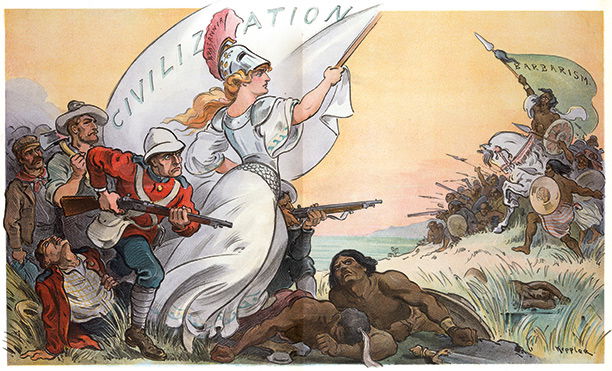 Yeah I know this picture is not very PC nowadays!
Yeah I know this picture is not very PC nowadays!







